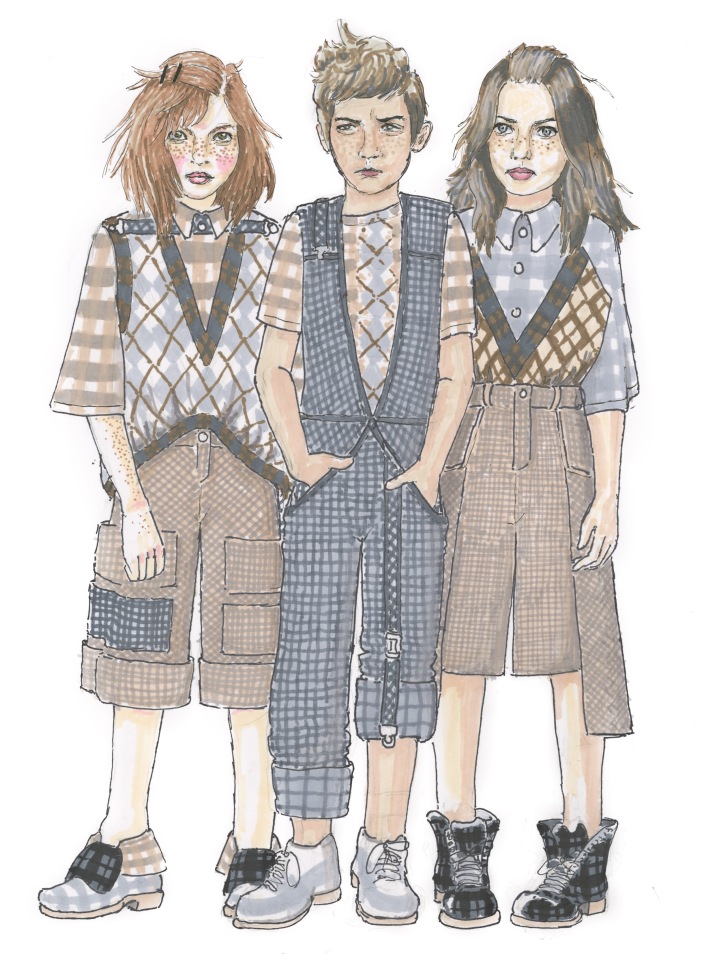What!?!?! Three posts in a row, what’s happening?!?! I am trying to overcompensate for my mini-drought. And this is way overdue!
So look at my kids(*shoves wallet photos in your face)!!! For my children’s wear line, I used To Kill a Mockingbird by Harper Lee as my main source of inspiration. We had to use plaid and gingham only, and nothing else. I tried to stay as far away from bright colors as I could for a of couple reasons. First, it would be too expected to use bright colors for children. I know that is the trend because children should be fun, bright, and bubbly, but the children that wear my clothes will be fashionable enough to know better:P I also did not want to risk having anything look like Bermuda shorts or some other weird, preppy look; it is simply not my aesthetic. If we are using plaid and gingham head to toe, I knew I had to choose colors that look good together. The decade and mood that I was going for with To Kill a Mockingbird did not call for those types of bright and loud colors either. Lastly, my trio is supposed to be like Scout, Jem, and Dill. I chose this book as inspiration because I loved how Scout was such a tomboy. I often find decades where women do not have a lot of rights and attempt to search for the glimpses of feminism deep within them. I did not use bright colors because the fashion is meant to be gender neutral. I have seen too many of those gender study reports done where they mention the differences in how little girls grow up versus little boys. So like Scout, my girls will rarely be caught all dressed up. The little girls I dress prefer their comfort and the freedom to get their clothes dirty. And all three of my figures could swap clothes and it would not make much difference.
The clothes were supposed to have a slight depression feel, but they were not meant to be sad. I wanted to showcase the way a child in the south during that time would dress for school. There are some elements of using patches, where the girl on the left has one irregular patch on her pants and the other patches do not match the direction of the gingham on her pants. And the pants worn by the girl on the right have the same juxtaposing direction of gingham. This is meant to play on the homey, handmade nature of children’s clothing during this time. Mothers would mend their children’s clothes using whatever fabric they had available, placing it haphazardly. I wanted the boy in the center to wear some sort of overall, while not using classic overalls.
I loved this aesthetic because, as far as children’s wear is concerned, I wanted to transport my audience to a more playful time for children. A lot of what I loved while reading To Kill a Mockingbird and watching the movie was seeing the children play, explore, and grow up. While not always having the best experiences, they discovered it all on their own. My dad would often tell me about when he grew up as a child in the 60s and early 70s and how he would go off with his friends in the neighborhood. They would play in the woods, ride bikes, and even put on little performances and plays for their neighborhood. While this playful interpretation of the book may be a romanticized version, despite all that happens throughout the plot, I wanted to capture that childlike innocence and freedom through this collection. 
